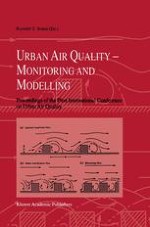The increasing concern over environmental and health impact of urban air pollution has lead to a growing need for an international conference focussing specifically on urbanised regions. Although, air quality has gained importance through out the world, it is especially in areas of high urban development that the problems are particularly acute. Scientific interest in this field is particularly evident from the growing number of journal publications and conference presentations. The numerous conferences held every year on air pollution, however, have tended to encompass a broad theme and have not specifically focussed on the urban environment. In order to address this need an international conference on urban air quality was organised by the Environmental Physics Group of the Institute of Physics in collaboration with the Royal Society of Chemistry (RSC), The Royal Meteorological Society (RMS) and the National Society for Clean Air and Environmental Protection (NSCA). Over 100 participants from various countries attended this first international conference on urban air quality. The aim of the conference was to provide a forum for open scientific discussion on the latest advances in the field of urban air quality monitoring and modelling. The range of topics included: chemical and biogenic pollutants, monitoring techniques, instrumentation, analysis of pollutants, spatial and temporal interpretation of air quality data, emission sources and modelling of air quality. All papers submitted for publication were peer reviewed and consequently, some articles were not successful in the refereeing process and have not been included in this special issue.
